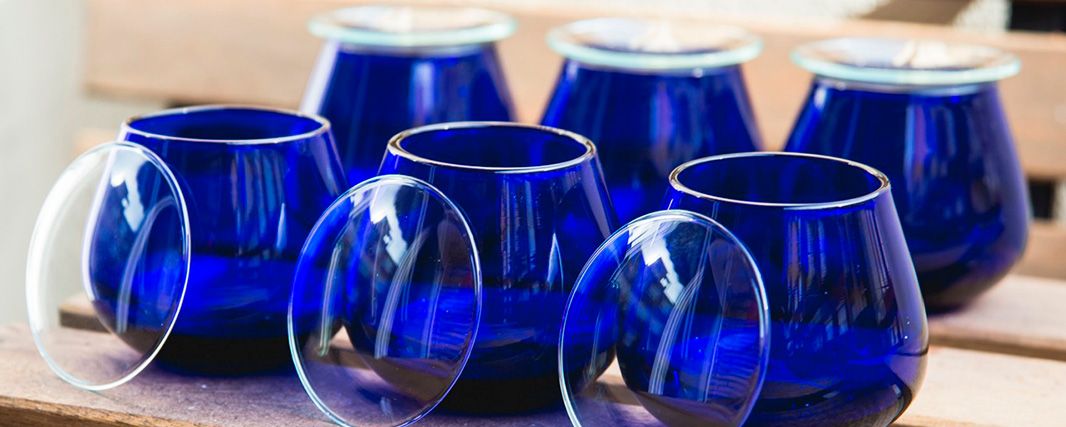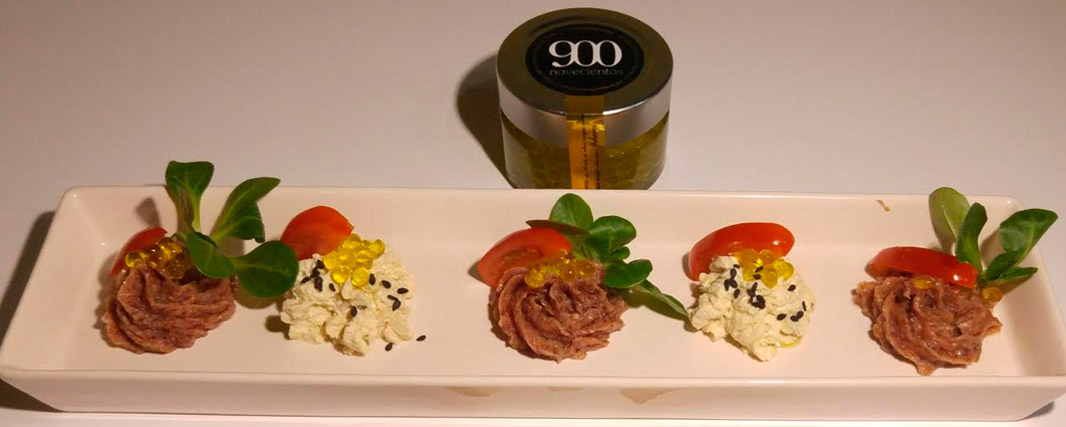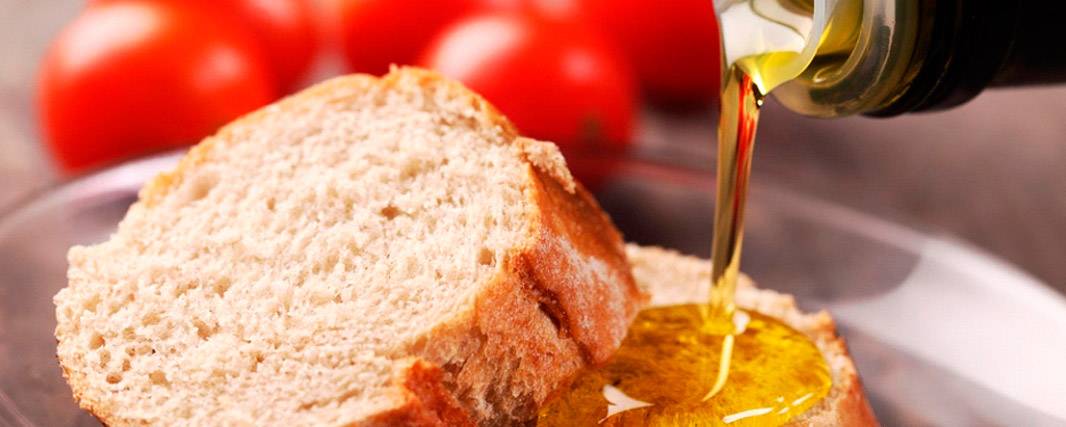
The great value of extra virgin olive oil has been recognised throughout history, whether used as an ointment, in Roman lamps or in religious rituals. These days, as well as being a sociocultural and envirnomental foundation of Andalucía’s agriculture and countryside, it is a food basic to the Meditteranean diet.
Over time, the elaboration of extra virgin olive oil has been such that now, a great variety of high quality olive oils are produced, each with different qualities of aroma, taste and other factors; making it difficult for those who are not experts to identify each olive oil at its best. This diversity of extra virgin olive oils results from the richness of different olive varieties, soil types, climate factors and production processes, throughout our land of Andalucía.
Whether the juice is obtained from healthy olives at the peak of maturity, the treatment of the fruit from collection up until final pressing, the agronomical and climatic factors all determine the quality of the olive oil.
From consumers’ need to understand how to differentiate the range of aromas and flavours of olive oil, and more particularly extra virgin olive oil, arises the concept of catar (taste), from the Latin captare, literally meaning ‘to search’.
The organoleptic qualities of a product are the sum of its characteristics or attributes that can be perceived through the senses (sight, smell, taste, feel) such as colour, aroma, flavour and liquidity. Organoleptic analysis can seem subjective because everyone has his or her own sense perceptions; however, with training and the use of specialist vocabulary, there can be agreed criteria for the classification, praise, criticism or discussion of the golden liquid of the Meditteranean.
Even though the analysis of taste requires exhaustive training on the part of the taster, requiring a great deal of time to achieve, we will briefly explain the following expert standards so that – within our limitations – we can discern the quality of an extra virgin olive oil.
See more at: https://www.aceitenovecientos.com/catar-aceite-oliva-virgen-extra/#sthash.m109Mc6n.dpuf
The senses used in olive oil tasting are sight, smell, taste and feel. Interestingly, professional tasters do not take the colour of extra virgin olive oils into account when making a sense analysis, because it is not a determinant of quality. Depending on the variety or stage of maturity of the olive, we might come across olive oils which are greener or more golden, with tones from greenish yellow to straw yellow; but both could be of maximum quality.
The sense of smell is used to identify the aroma of an extra virgin olive oil. It recognises and classifies the properties that are spread upwards through the air. For their part, the palate and tongue are charged, through the sense of feel, with assessing the structure and consistency of an extra virgin olive oil.
To practise olive oil tasting, you use blue coloured glasses covered with a transparent glass lid, following these stages:
- Aromatic
- Visual
- Flavour
- Consistency
- Balance and harmony
The taster picks up the glass, keeping the lid on; then, removing the lid, begins to smell the sample, taking light inward breaths, slowly and deeply, until the positive or negative qualities of the sample are appreciable, and how strong they are. This phase should not take longer than thirty seconds. Next, he or she moves on to the test of flavour. For this, a small sip of the olive oil is taken. It is important to spread the oil throughout the mouth. In general, appreciation of the four fundamental taste qualities (sweet, salty, acidic and bitter) is gained through the use of distinct tongue and palate areas, and this is so with the taste qualities specific to this product.
The olive oil has to be taken, in sufficient quantity and very slowly, over the back part of the tongue towards the palate and throat, with the attention focused on the presence of bitterness and spiciness. In some olive oils, these can pass by unnoticed, or the bitterness can be hidden by the spiciness. Taking short repeated breaths, introducing air into the mouth, helps to spread the oil through the mouth and enables appreciation of its aromatic properties via the nasal passages. The taster also has to take into account the consistency of the olive oil; so also with its fluidity, thickness and sharpness, noting their extent when they appear.
Between each tasting and the next, a break must be taken (of at least fifteen minutes), so that the effects of the first one can pass. Chewing then spitting out a slice of orange is recommended, before rinsing out the mouth with water at room temperature.
Qualities appreciable through extra virgin olive oil tasting
Now let us describe the qualities appreciable through the tasting of any extra virgin olive oil, through each one of the senses, the positives as much as the negatives. It is very important to realise that an extra virgin olive oil must pass strict quality standards and that the presence of negative qualities will prevent this.
- With visual analysis, we assess the appearance of the olive oil. These are considered positive aspects: clarity of filtration, clarity when poured, opaque or opaque and opalescent. Muddy, dirty and dark are negative aspects. Colour is not a tasting criterion, which is why it is normal to use blue glasses that do not show the colour tones of the olive oil.
- With the smell analysis we move to the aromatic qualities. These are assessed according to their intensity and there are two categories. Agreeable/positive aspects include mature olive aroma, green olive aroma, apple, green herb, fig and green leaf; disagreeable/negative aspects include sour, vinegar, aroma of water extracted through pressing, wine aroma, rancid, muddy, rotten, sticky, mouldy, humid, basket aroma and metallic.
- Next we have the taste analysis through flavour and palate. We assess the sensations in the mouth according to their flavour, quality and intensity. These qualities are considered positive or desirable: typical of the olives used, clean, fresh, fruity, bitter, if to the proper, agreeable extent; wholesome, sweet, almond-flavoured, pine-flavoured and vegetable-flavoured. These qualities are considered to be defects: intensely bitter, intensely spicy, dry leaf, wine, vinegar, acidic, basket, rope, re-heated, frozen olive, mouldy or humid, metallic, muddy, wooden, wormed, putrid or rancid flavours.
- For tactile analysis we use the palate and mouth. The physical consistency of an olive oil is assessed according to the following definitions: thickness, smothness, fluidity and wateriness. Olive oils that present tactile qualities that are different from those normally or previously presented by their variety are considered to be detective.
- Finally we judge the olive oil’s overall harmony, taking account of all of its characteristics and begining to arrive at an overall mark. The judgement goes according to the balance between aromas and taste, classified by:
- Olive oils which are afrutado, that is, showing characteristics that are typical of the olives from which they are produced.
- Balanced, harmonious olive oils: that is, showing the best balance between aromas and flavours.
- Unbalanced, unintegrated olive oils: that is, oils where an aroma, flavour or defect predominates.



